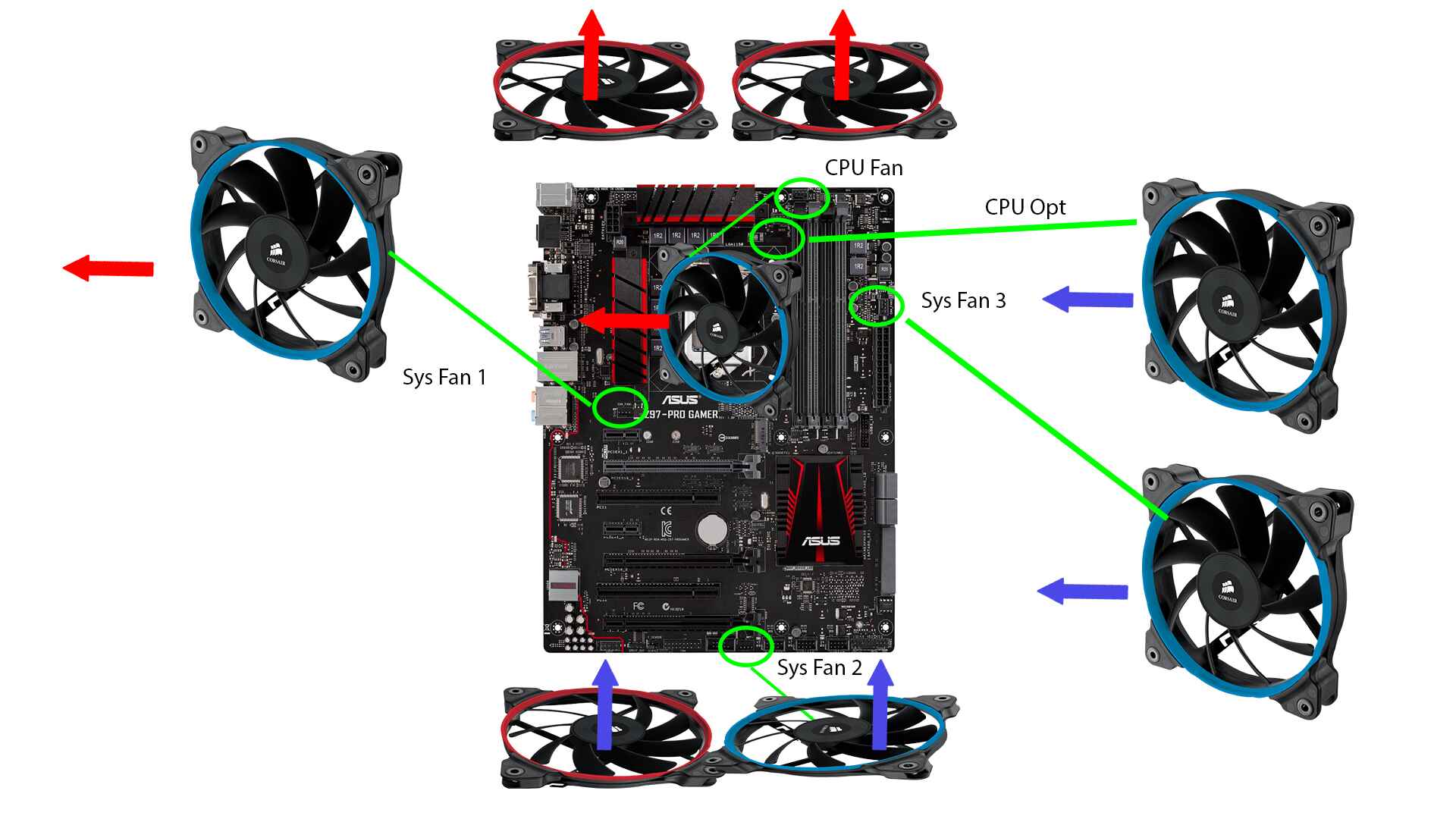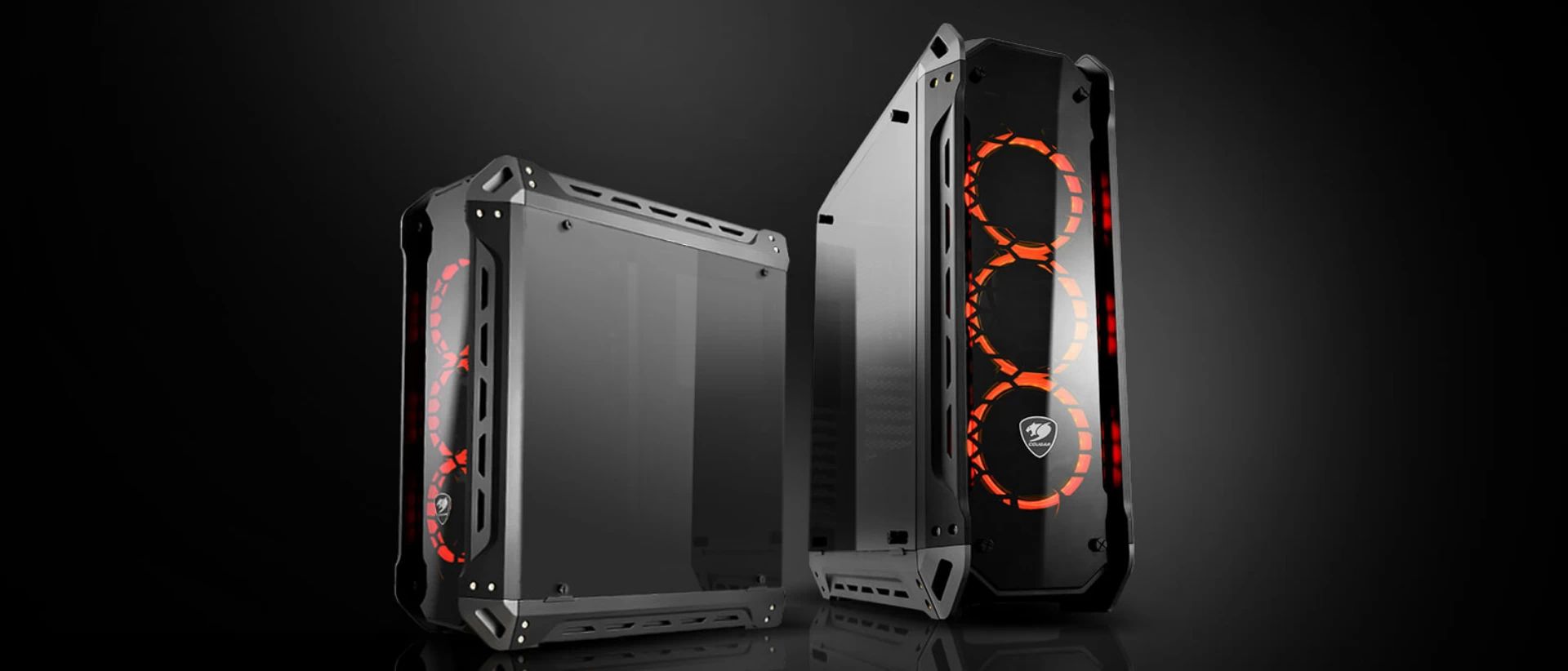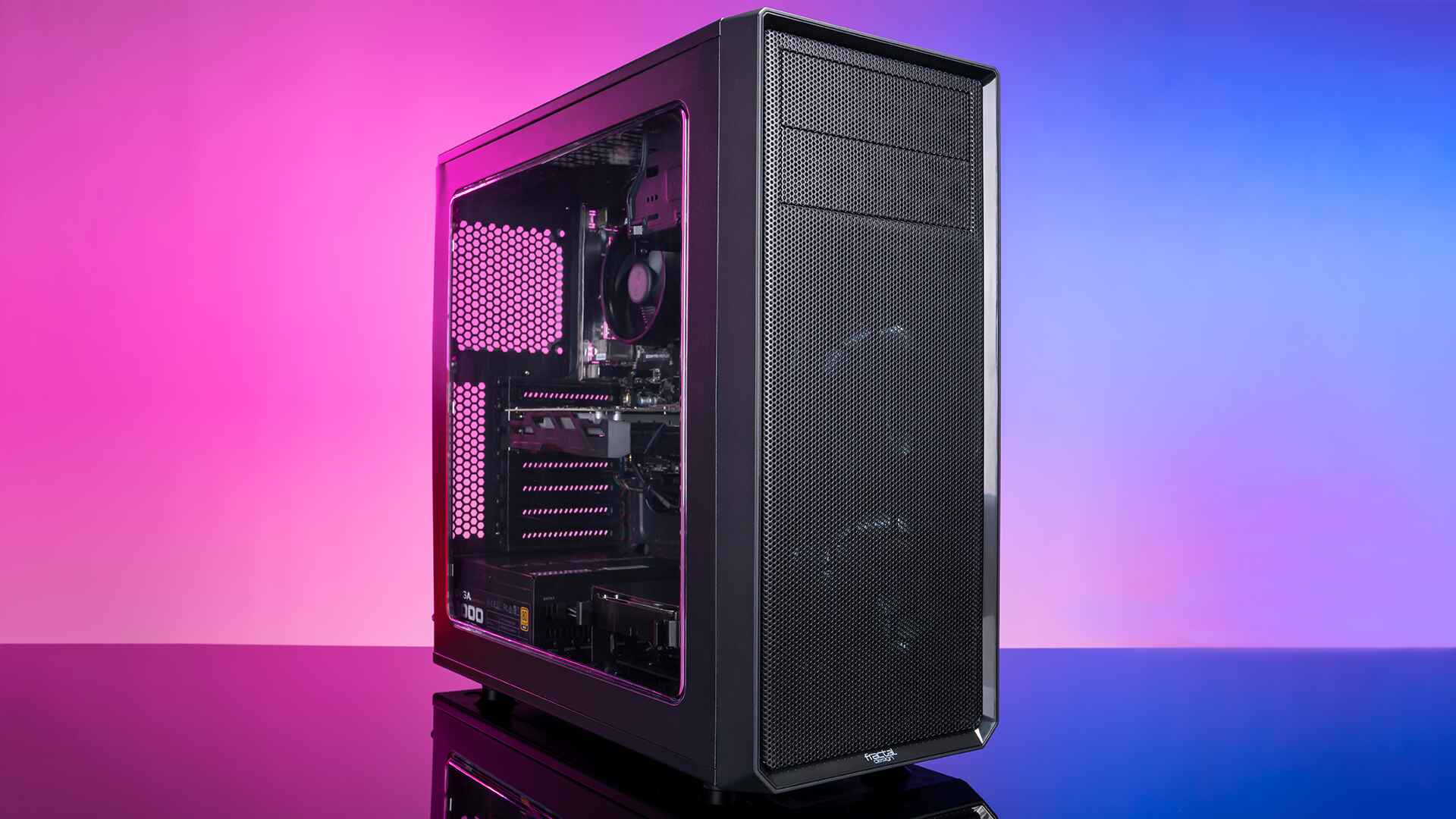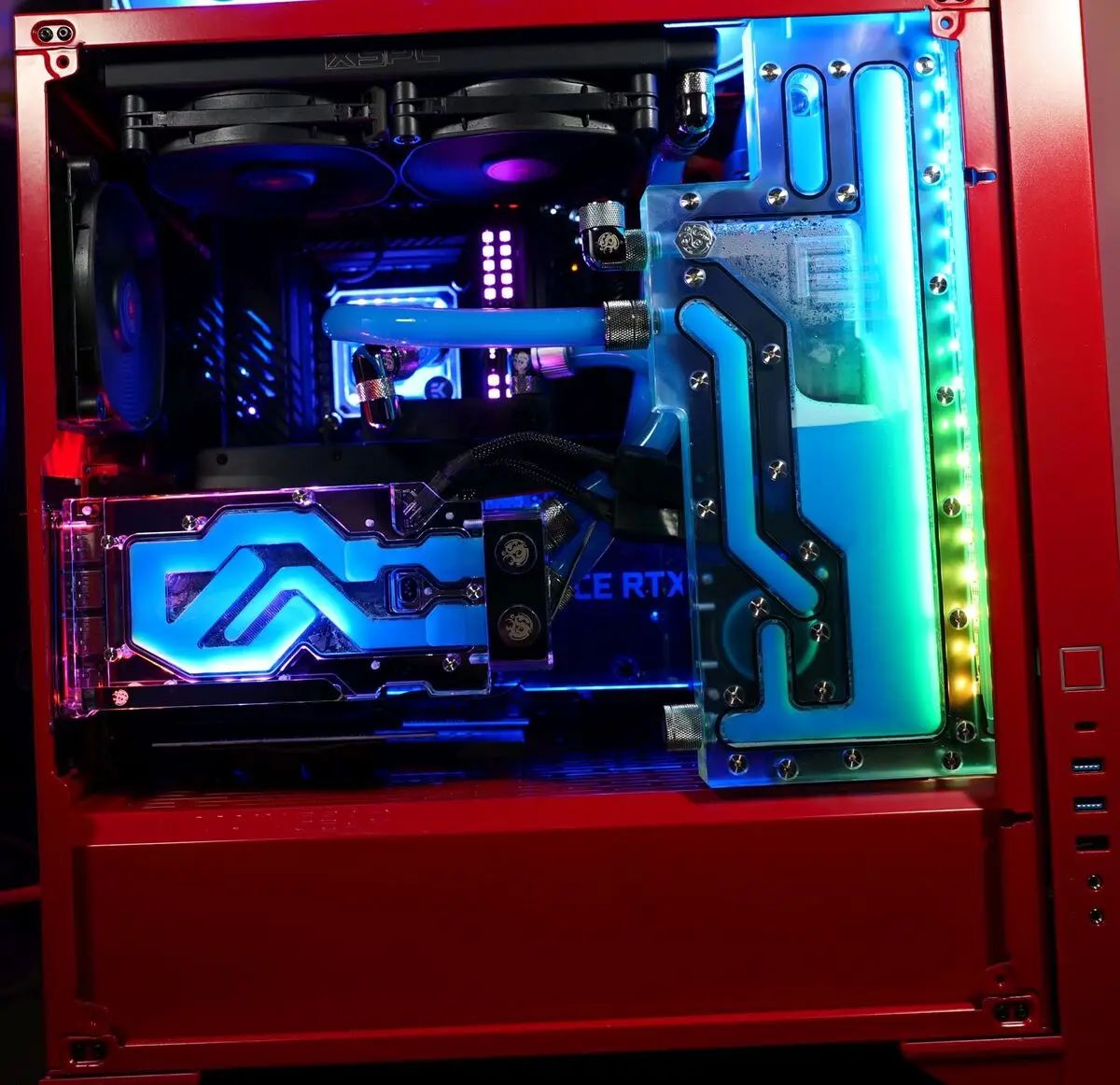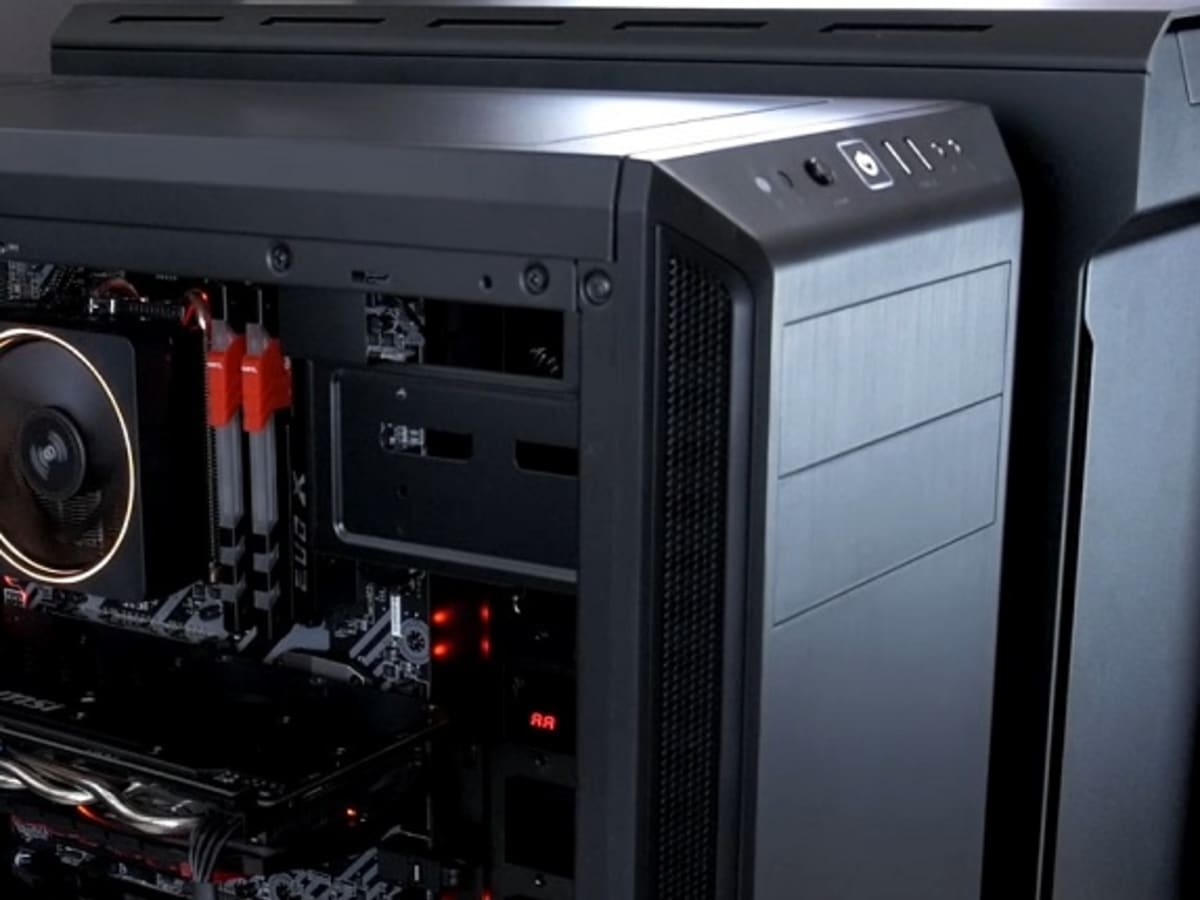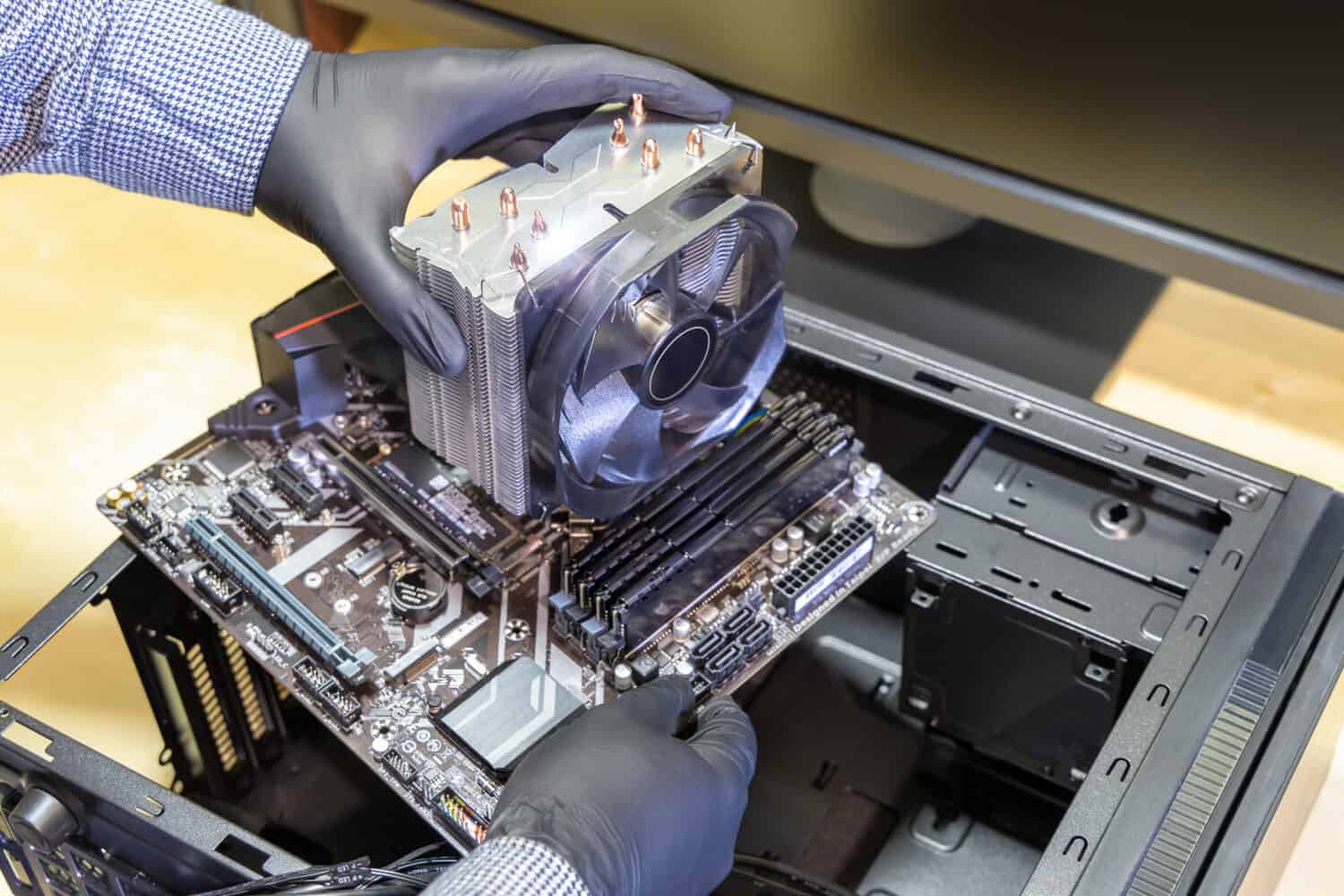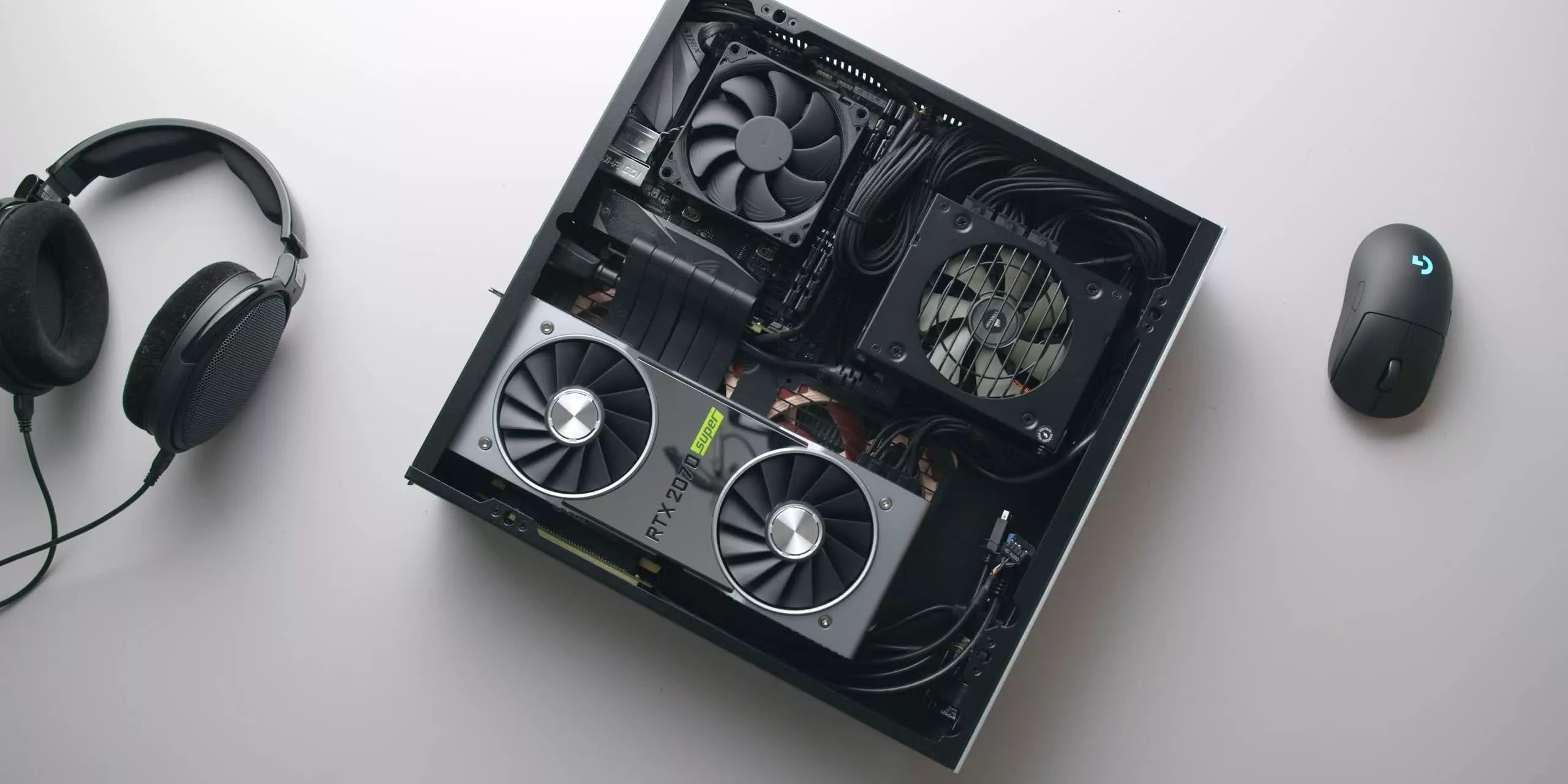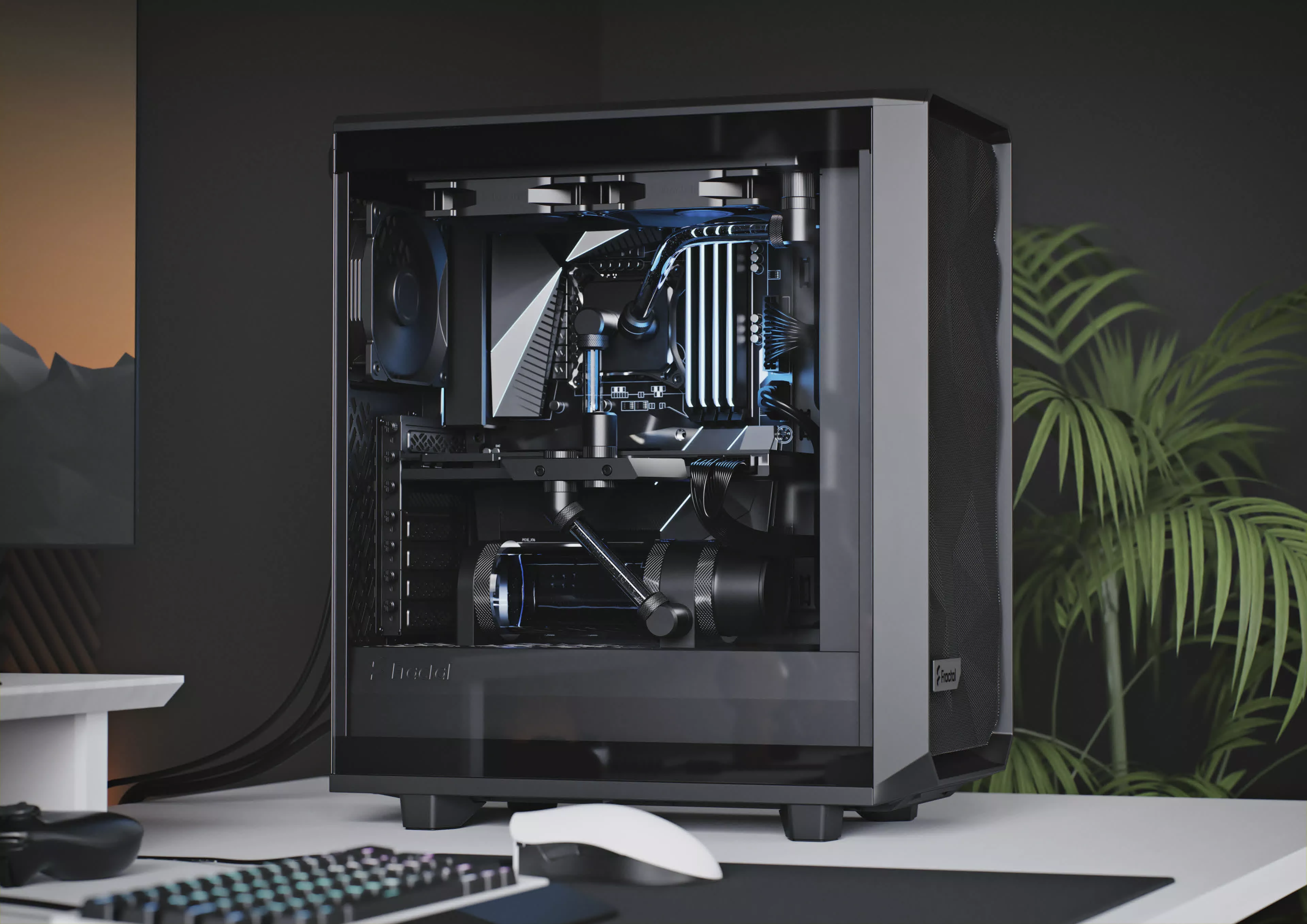Why It’s Important to Have Enough Fan Slots
When it comes to maintaining optimal performance and longevity for your PC, proper cooling is crucial. Without sufficient airflow, your components can overheat, leading to reduced performance, potential damage, and even system failure. That’s where fan slots come into play.
Fan slots are openings on your PC case that allow you to install cooling fans. These fans draw in cool air from the surroundings and expel hot air generated by the components inside your PC. Having enough fan slots ensures efficient air circulation, preventing heat buildup and keeping your system running smoothly.
Here are a few reasons why having enough fan slots is important:
- Temperature Regulation: Components like the CPU and GPU generate a significant amount of heat while operating. Adequate fan slots allow for proper ventilation, cooling down these components and preventing overheating. By maintaining low temperatures, you’ll ensure optimum performance, reduce the risk of hardware failure, and avoid performance throttling.
- Dust and Dirt Prevention: Airborne particles, such as dust and dirt, can accumulate inside your PC case over time. Having enough fan slots allows for better air intake and, with the help of dust filters, helps prevent these particles from entering and settling on your components. This reduces the risk of clogging and extends the lifespan of your PC parts.
- Noise Reduction: Insufficient cooling can cause your components to work harder, leading to increased fan speed and noise. Having additional fan slots improves airflow efficiency, allowing your fans to run at lower speeds while still maintaining optimal temperatures. This results in a quieter and more enjoyable computing experience.
- Future-Proofing: As technology advances, newer components tend to require better cooling solutions. By having extra fan slots, you’ll be prepared to upgrade your PC with more powerful components that demand increased cooling. This future-proofing ensures that your system can handle the higher heat output of newer hardware without issues.
In summary, having enough fan slots in your PC case is vital for temperature regulation, preventing dust buildup, reducing noise, and ensuring future compatibility with advanced components. Now that you understand why it’s important, let’s explore how you can check if your PC case has enough fan slots.
Checking the Specifications of Your PC Case
Before diving into the physical examination of your PC case, it’s essential to start by checking the specifications provided by the manufacturer. The specifications will typically list the number and size of fan slots available in the case. Here’s how you can do it:
- Research the Model: Look up the make and model of your PC case. Visit the manufacturer’s website or search for the product documentation online. The specifications section should provide detailed information about the fan slots available and their locations. Take note of the fan slots’ sizes, as this will be helpful when choosing the appropriate fans to install.
- Check Product Manuals: If you still have the physical copy of the product manual that came with your PC case, refer to it. Flip through the pages or use the index to locate the section that covers the case’s specifications. Look for details about the number, size, and positioning of the fan slots.
- Explore Online Forums or Reviews: Sometimes, it can be challenging to find the official specifications for older or less popular PC cases. In such cases, online forums or reviews can provide valuable insights. Search for discussions or reviews related to your PC case model, and see if users or reviewers mention the number and sizes of fan slots.
By checking the specifications of your PC case, you’ll have a good starting point in determining the number and size of fan slots available. However, it’s important to remember that actual physical examination is still necessary to confirm the accuracy of the provided information. Let’s move on to the next step and examine the external appearance of your PC case.
Examining the External Appearance of Your PC Case
Once you have checked the specifications of your PC case, the next step is to physically examine its external appearance. By visually inspecting the case, you can gather additional information about the fan slots. Here’s what you need to do:
- Observe the Side Panels: Carefully inspect both side panels of your PC case. Look for any visible fan slots or openings. These slots can vary in size and shape, so be sure to take note of their locations and dimensions. Some cases may have transparent side panels that allow you to easily spot any existing fans or fan slots.
- Inspect the Front and Rear Panels: Take a close look at the front and rear panels of your PC case. Some cases have dedicated areas with pre-installed fan slots or vents. Look for any designated fan areas, grilles, or mesh patterns that indicate the presence of fan slots. These can be located at the top, bottom, front, or rear of the case.
- Check for Removable Covers: In some cases, fan slots may be hidden behind removable covers or panels. Gently check if any sections can be detached or opened to reveal additional fan slots. These covers are often designed to provide flexibility in customizing the cooling setup of the PC case.
- Look for Control Buttons or Knobs: Some PC cases feature built-in fan speed controls or fan LED lighting controls. These buttons or knobs may be located on the front or top panel. If your case has these controls, it is a strong indication that there are fan slots present, as they are designed to regulate the attached fans.
By carefully examining the external appearance of your PC case, you can gather visual clues about the presence of fan slots. However, keep in mind that not all fan slots may be visible from the outside. To get a comprehensive understanding, it is important to open up your PC case and check for fan slots internally, which we will explore in the next section.
Opening up Your PC Case to Check for Fan Slots
To get a complete picture of the fan slots available in your PC case, you’ll need to open it up and examine the internal components. Here’s how you can safely open your PC case and check for fan slots:
- Power Off and Unplug: Before working on your PC, make sure to power it off completely and unplug it from the wall outlet. This ensures your safety and prevents any accidental damage to the components.
- Remove Side Panels: Most PC cases have removable side panels secured by screws or latches. Use a screwdriver or follow the instructions provided with your case to loosen and remove the side panels. Keep the screws safely aside for later reassembly.
- Inspect the Interior: With the side panels removed, take a close look inside your PC case. Locate the area where the motherboard is mounted. Look for any visible fan slots near the front, rear, top, or bottom of the case. Note the size and position of the slots and compare them with the information you gathered from the specifications and external inspection.
- Check for Pre-installed Fans: Some PC cases come with pre-installed fans. Take note of their placement and the number of fans present. This can give you an idea of the cooling setup and the availability of additional fan slots.
- Remove Dust Filters or Covers: If your PC case has dust filters or covers over the fan slots, gently remove them for a better view. These filters are designed to protect the internal components from dust and debris, so make sure to clean or replace them if necessary.
- Count the Fan Slots: Count the number of visible fan slots in your PC case. This will give you an accurate idea of the existing slots and help determine if you need to add more fans for improved cooling.
Remember to handle the internal components with care and avoid touching any sensitive parts. By opening up your PC case and examining the internal components, you can get a clear understanding of the available fan slots and further assess your cooling needs.
Noting the Positioning of Existing Fans in Your PC Case
As you explore the internal components of your PC case, it’s important to take note of the positioning of any existing fans. This information will be crucial in determining the effectiveness of the current cooling setup and identifying any potential limitations. Here’s how you can note the positioning of existing fans:
- Observe the Fan Locations: Look for any fans that are already installed in your PC case. Take note of their positions, such as front, rear, top, or side. Pay attention to how the fans are oriented, whether they are intake fans (drawing air into the case) or exhaust fans (expelling hot air from the case).
- Check Fan Sizes: Determine the sizes of the existing fans. Common fan sizes include 120mm, 140mm, and 200mm. Knowing the sizes will help you choose compatible fans if you plan to add more in the future.
- Assess the Direction of Airflow: Determine the direction of airflow created by the existing fans. This information will give you insights into how the air circulates within your PC case. Proper airflow management is essential for effective cooling, so understanding the existing airflow patterns can guide you in making informed decisions about adding or relocating fans.
- Note Fan Speed: If you have access to the fan speed controls, observe the current speed settings of the fans. Higher fan speeds generally indicate a stronger airflow, while lower speeds might focus on minimizing noise. This information can be used to fine-tune your cooling strategy.
- Consider Cable Management: Pay attention to how cables are managed around the existing fans. Cables should not obstruct the airflow or interfere with the operation of the fans. If necessary, consider reorganizing the cables to optimize airflow and prevent any potential obstructions.
By noting the positioning of existing fans in your PC case, you can assess the cooling effectiveness and identify any areas that might require improvement. This information will be valuable when deciding the number and placement of additional fans for optimal airflow and temperature management.
Determining the Size of the Fan Slots in Your PC Case
When considering adding or upgrading fans in your PC case, it’s important to determine the size of the fan slots. Choosing the appropriate fan size ensures compatibility and optimal airflow. Here’s how you can determine the size of the fan slots in your PC case:
- Check the Specifications: Refer back to the specifications of your PC case provided by the manufacturer. These specifications often indicate the sizes of the fan slots available. Look for details such as “fan slot size” or “compatible fan sizes” to identify the dimensions of the slots.
- Measure the Fan Slots: If the specifications do not indicate the fan slot sizes or if you want to double-check, you can measure the fan slots directly. Use a ruler or measuring tape to determine the length and width of the openings where the fans are mounted. Common fan sizes include 120mm, 140mm, and 200mm, so compare your measurements to these standard sizes.
- Inspect Existing Fans: If your PC case already has fans installed, you can deduce the size of the fan slots based on the size of the existing fans. The size is typically indicated on the fan itself. Note that some PC cases may have different-sized fan slots, so be sure to measure each slot individually if this is the case.
Once you have determined the size of the fan slots, you can make informed decisions about the fans you wish to install. Consider factors such as the available space, the airflow requirements of your components, and the compatibility with other cooling solutions, such as CPU coolers or liquid cooling radiators.
Remember, installing fans that are too large or too small for the fan slots can lead to issues such as improper fit, reduced airflow, or noise problems. Taking the time to determine the size of the fan slots ensures proper cooling and enhances the overall performance and longevity of your PC.
Comparing the Number of Fan Slots to Your Cooling Needs
Once you have determined the size and availability of fan slots in your PC case, it’s important to assess your cooling needs and compare them to the number of fan slots. This step ensures that you have sufficient airflow to maintain optimal temperatures and prevent overheating. Here’s how you can compare the number of fan slots to your cooling needs:
- Consider Component Heat Output: Evaluate the heat output of the components in your PC, especially the CPU and GPU. High-performance or overclocked components generate more heat and require better cooling. If you have power-hungry components, you may need more fan slots to handle the heat generated.
- Assess the Ambient Temperature: Take into account the ambient temperature of the room where your PC is located. If the room tends to be warm or if you live in a hot climate, additional fan slots may be necessary to counteract the higher ambient temperature and ensure effective cooling.
- Factor in Planned Upgrades: Consider any planned upgrades or additions to your PC. If you intend to install more powerful components or expand your system, you may need additional fan slots to accommodate the increased heat output and ensure proper cooling.
- Review Existing Cooling Solutions: Evaluate your current cooling setup, including any existing fans, CPU coolers, or liquid cooling solutions. Determine if the existing cooling solutions are sufficient for your needs or if additional fan slots are required to improve airflow and heat dissipation.
- Consult Recommended Cooling Configurations: Some PC case manufacturers provide recommended cooling configurations based on the number and placement of fan slots. Consult these recommendations to ensure that you have enough fan slots to meet the manufacturer’s guidelines for optimal cooling performance.
By comparing the number of fan slots to your cooling needs, you can identify any potential gaps in your cooling setup. Having an adequate number of fan slots ensures effective airflow and helps maintain optimal temperatures for your PC components, prolonging their lifespan and enhancing performance.
Considering Aftermarket Solutions for Extra Fan Slots
If you find that the number of fan slots in your PC case is not sufficient for your cooling needs, you may consider aftermarket solutions to add extra fan slots. These solutions can provide you with the flexibility to enhance airflow and improve cooling efficiency. Here are a few options to consider:
- Fan Brackets and Mounting Kits: Some manufacturers offer fan brackets and mounting kits that allow you to attach additional fans to your PC case. These brackets can be installed in various locations, such as unused drive bays or expansion slots, providing you with extra fan slots without the need for a case modification.
- Fan Hub or Controller: A fan hub or controller is a device that allows you to connect multiple fans to a single fan header or controller. This solution eliminates the need for additional fan slots and provides centralized control over the connected fans. It is particularly useful when your motherboard has limited fan headers available.
- Case Modification: In some cases, you may consider modifying your PC case to add extra fan slots. This option requires advanced technical skills and should only be undertaken if you are confident in your abilities. This can involve cutting or drilling holes in the case to create custom fan slots. Be sure to research and plan the modifications carefully to avoid damaging your case or components.
- Move Components or Cables: Sometimes, you can optimize the airflow within your PC case by rearranging components or cables. By ensuring that components are not obstructing the existing fan slots and re-routing cables to provide a clear path for airflow, you can maximize the effectiveness of the current cooling setup without adding extra fan slots.
- Consider Liquid Cooling: If you require advanced cooling performance, liquid cooling solutions can be an alternative to traditional fans. Liquid coolers consist of a radiator, pump, and a CPU or GPU block. These solutions can reduce noise and provide superior cooling performance. Liquid cooling typically requires dedicated mounting points in your PC case, so ensure that you have the necessary slots or consider replacing your PC case if required.
When considering aftermarket solutions for extra fan slots, it’s essential to carefully evaluate your specific needs, technical capabilities, and budget. Research different products, read customer reviews, and consult with experts if needed. By exploring these options, you can find a suitable solution to improve the cooling capacity of your PC case and ensure optimal temperatures for your components.
Conclusion
Ensuring adequate cooling for your PC is crucial for optimal performance and longevity. By checking the specifications, examining the external appearance, and opening up your PC case, you can determine the number and size of fan slots available. Noting the positioning of existing fans provides insights into the current cooling setup, while assessing your cooling needs helps you evaluate if additional fan slots are required.
If you find that the number of fan slots in your PC case is insufficient, aftermarket solutions such as fan brackets, fan hubs, or case modifications can be considered to add extra fan slots. Additionally, optimizing cable management or exploring liquid cooling solutions can further enhance your cooling capabilities.
Remember to prioritize proper airflow, temperature regulation, and dust prevention when making decisions about fan slots. Be cautious when modifying your PC case and ensure that any changes are performed safely and with the necessary expertise.
By following the steps outlined in this guide, you can determine the fan slot availability in your PC case and make informed decisions about improving the cooling efficiency. With adequate airflow and proper temperature management, you can enjoy the optimal performance and durability of your PC components.







